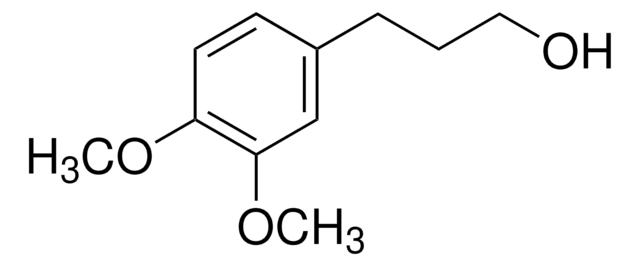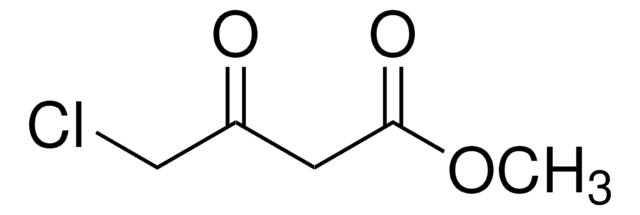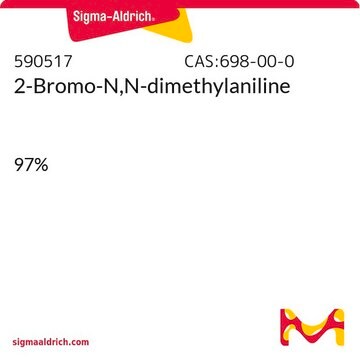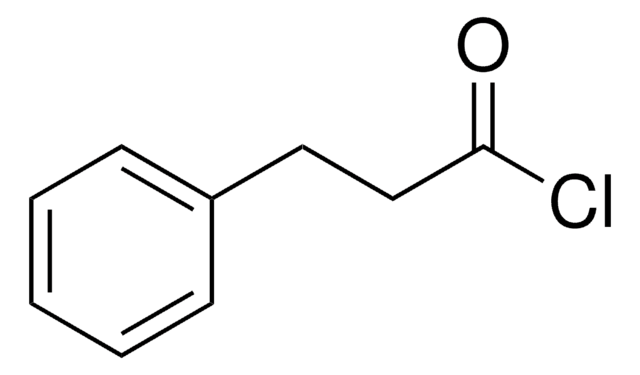162345
3-(3,4-Dimethoxyphenyl)propionic acid
99%
Synonym(s):
3,4-Dimethoxyhydrocinnamic acid
Sign Into View Organizational & Contract Pricing
All Photos(1)
About This Item
Linear Formula:
(CH3O)2C6H3CH2CH2CO2H
CAS Number:
Molecular Weight:
210.23
Beilstein:
2696272
EC Number:
MDL number:
UNSPSC Code:
12352100
PubChem Substance ID:
NACRES:
NA.22
Recommended Products
Assay
99%
form
solid
mp
96-97 °C (lit.)
functional group
carboxylic acid
SMILES string
COc1ccc(CCC(O)=O)cc1OC
InChI
1S/C11H14O4/c1-14-9-5-3-8(4-6-11(12)13)7-10(9)15-2/h3,5,7H,4,6H2,1-2H3,(H,12,13)
InChI key
LHHKQWQTBCTDQM-UHFFFAOYSA-N
Looking for similar products? Visit Product Comparison Guide
General description
3-(3,4-Dimethoxyphenyl)propionic acid (3,4-Dimethoxyhydrocinnamic acid) forms complex with copper (II).
Application
3-(3,4-Dimethoxyphenyl)propionic acid was used in screening of short-chain fatty acid derivatives for the ability to induce γ globin gene expression in reporter assays and erythropoiesis in vivo.
Storage Class Code
11 - Combustible Solids
WGK
WGK 3
Flash Point(F)
Not applicable
Flash Point(C)
Not applicable
Personal Protective Equipment
dust mask type N95 (US), Eyeshields, Gloves
Choose from one of the most recent versions:
Already Own This Product?
Find documentation for the products that you have recently purchased in the Document Library.
Customers Also Viewed
Metal-cinnamic acids interactions. Part IV. Synthesis, study and antimicrobial activity of copper (II) complexes of 3, 4-dimethoxyhydrocinnamic acid.
Zoroddu MA and Berardi E.
Transition Met. Chem. (London), 14(4), 269-272 (1989)
Betty S Pace et al.
Blood, 100(13), 4640-4648 (2002-10-24)
Orally bioactive compounds that induce gamma globin gene expression at tolerable doses are needed for optimal treatment of the beta-hemoglobinopathies. Short-chain fatty acids (SCFAs) of 2 to 6 carbons in length induce gamma globin expression in animal models, and butyrate
Our team of scientists has experience in all areas of research including Life Science, Material Science, Chemical Synthesis, Chromatography, Analytical and many others.
Contact Technical Service













